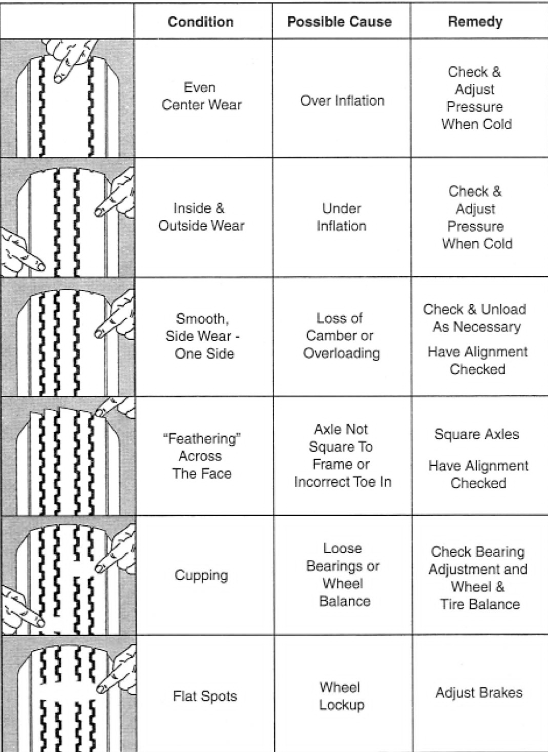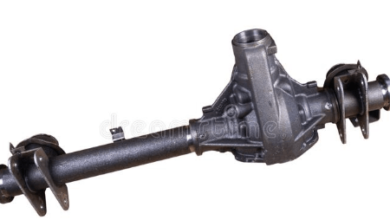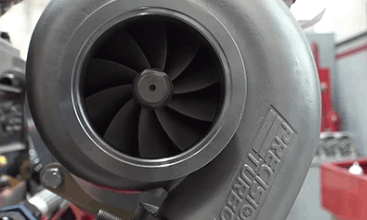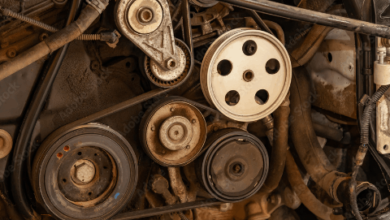Tire Wear Chart – Keep Eye on Your Tires!
For a vehicle driver, it is very important to read the general wear patterns on tires. And if you read these patterns, you can easily make conclusions about the problems with your car. And you can apply the possible fixes. This is a very easy thing that you can do. Here, we explain the tire wear chart to you. And we explain the general possible solutions that you can apply.
What are the General Wear Patterns of Tires?

It is very important to read the general wear patterns of the tires. And you can take important precautions to prevent them.
You can see the general wear patterns on that tire wear chart. And you can apply the general kinds of things to prevent them.
Even Center Wear
In this wear pattern, you can see even wear on the center of the wheel. And the most common cause of that wear is the overinflation of the tire.
Overinflation can cause this problem. Thats right. Because when you inflate the tire on a highway, the even side that contacts the surface of the road becomes a concave shape. And this will cause this kind of wearing pattern.
You just need to check the pressure of the tire and decrease the pressure to the normal values. The general pressure values will be between 30-35 psi for the passenger cars.
Inside and Outside Wear
This is also a very common type of tire wear. You can see the shape and the wear at the boundaries between the even side and the tire bead. The most common cause of this wear pattern is the underinflation of the tire.
Like above, you need to check the tire pressure again. If the tire pressure is lower than 30 psi for passenger cars, you need to inflate the tire to a certain value.
Smooth Side Wear on One Side
Also, you may see very smooth wear on the outside or inside the tire. The most common cause of this type of wear is the loss of camber adjustmöent of the car. And also, if you load the car with a very high weight, the shape of the axle will change. Because of it, you will see wear on one side.
You need to bring your car to a car mechanic to check teh alignment of your tires. And this can solve your problem. And do not drive your car with heavy loads for long times.
Feathering
As you see in the photo, the feathering effect is a very destructive effect on the tires. This means there is a problem with the square shape of the axle. Oy you may have a problem with the frame of your car.
You just need to bring your car to a car mechanic to check the general things.
Cupping
This is also a very common tire wear pattern that we observe in general. As you can see in the tire wear chart above, you will see some kinds of regional wear. The most common cause of this problem is problems with the bearings of the wheel connectionsç and also you may have problems ith the wheel balance.
Like above, you need to bring your car to a car mechanic or expert to make the general tire adjustments again.
Flat Spots
Like the cupping, flat spots are the wears that take place as lines at the top side of the wheel. If you brake suddenly while you are driving your car very fast, you may have this kind of wear. And also if your brake is very tight, you need to adjust your brakes.
As you see above these are the general tire wear patterns that we encounter with car tires. You can check if you have any problems.
Last Words on Tire Wear Chart
These are the general problems and general wear patterns that you will probably see with your car. If you have additional comments and questions about this topic below.
Check the related posts about these tires to get to know about them;
Tire Balancing Beads – Buying Guide, Use and Advantages
Why Tires Deflate Over Time? Different Reasons and Fixes
How Close to Sidewall Can a Tire Be Patched? Simple Explanation
How Long Does It Take to Patch a Tire? Quick Answer
What Tire Pressure is Too Low? Simple Answer
How to Let Air Out of Tire? Simple Explanation
Tire Cage for Occupational Safety – All Information You Need
Tire Bead Sealer – Benefits, Use and Buying Guide
FAQ
There is a very basic test that while the expert examining your car making. They just apply a measurement device to your tire teeth to see the deepness. And if this value is below 2/32”, you need to replace this tire.
It is a generally good amount of tire deepness. But you need to start to look for new tires.
The 2/32” is the critical measurement that you need to replace your tires in general. And also if you have an irregular wear pattern on your tire, you need to check it.



